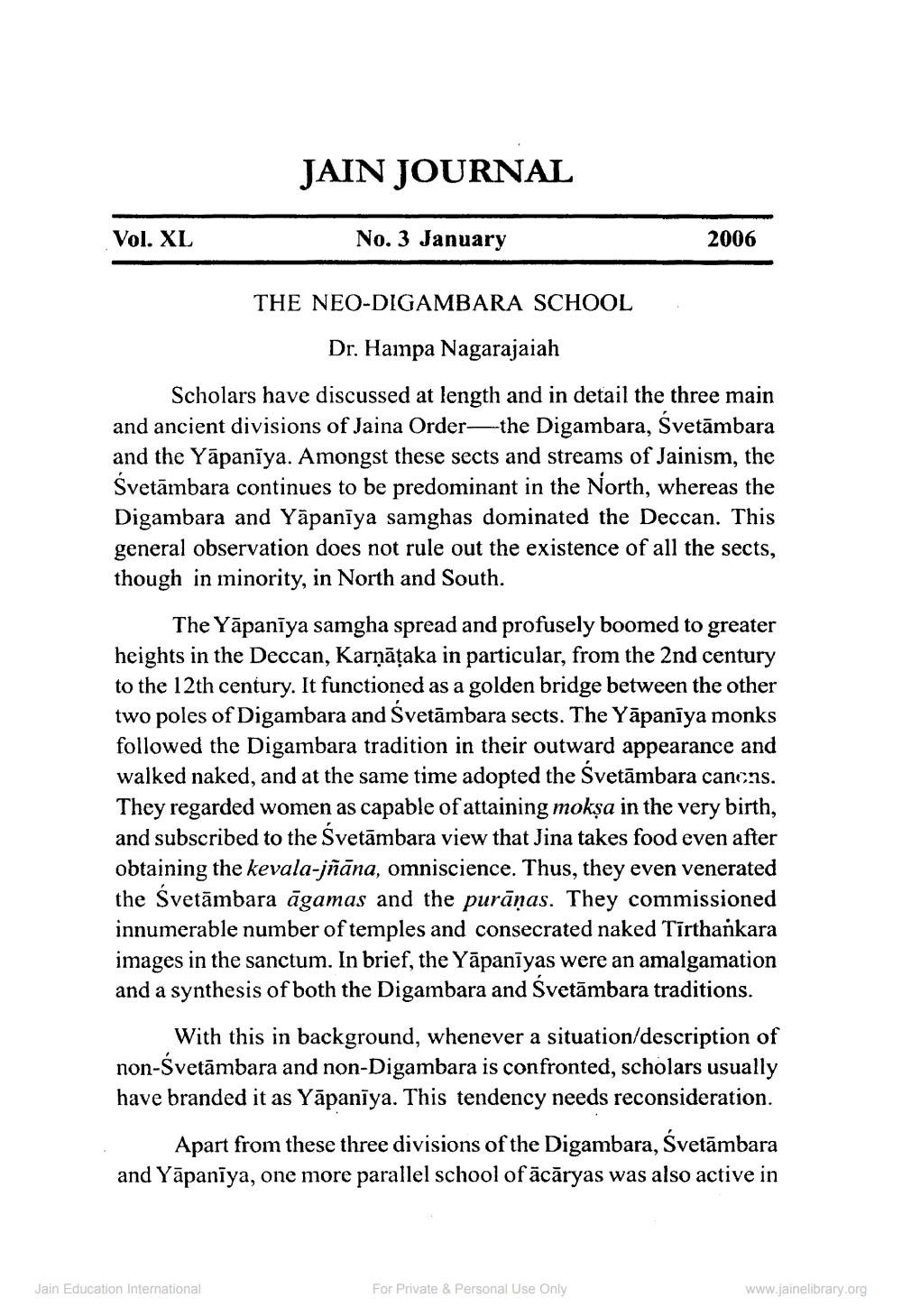________________
JAIN JOURNAL
Vol. XL
No. 3 January
2006
THE NEO-DIGAMBARA SCHOOL
Dr. Hampa Nagarajaiah Scholars have discussed at length and in detail the three main and ancient divisions of Jaina Order—the Digambara, Svetāmbara and the Yāpaniya. Amongst these sects and streams of Jainism, the Svetāmbara continues to be predominant in the North, whereas the Digambara and Yāpanīya samghas dominated the Deccan. This general observation does not rule out the existence of all the se though in minority, in North and South.
The Yāpanīya samgha spread and profusely boomed to greater heights in the Deccan, Karņāțaka in particular, from the 2nd century to the 12th century. It functioned as a golden bridge between the other two poles of Digambara and Svetāmbara sects. The Yāpanīya monks followed the Digambara tradition in their outward appearance and walked naked, and at the same time adopted the Svetāmbara cancns. They regarded women as capable of attaining mokṣa in the very birth, and subscribed to the Svetāmbara view that Jina takes food even after obtaining the kevala-jñāna, omniscience. Thus, they even venerated the Svetāmbara agamas and the purāņas. They commissioned innumerable number of temples and consecrated naked Tīrthankara images in the sanctum. In brief, the Yāpanīyas were an amalgamation and a synthesis of both the Digambara and Svetāmbara traditions.
With this in background, whenever a situation/description of non-Svetāmbara and non-Digambara is confronted, scholars usually have branded it as Yāpanīya. This tendency needs reconsideration.
Apart from these three divisions of the Digambara, Svetāmbara and Yāpanīya, one more parallel school of ācāryas was also active in
Jain Education International
For Private & Personal Use Only
www.jainelibrary.org




